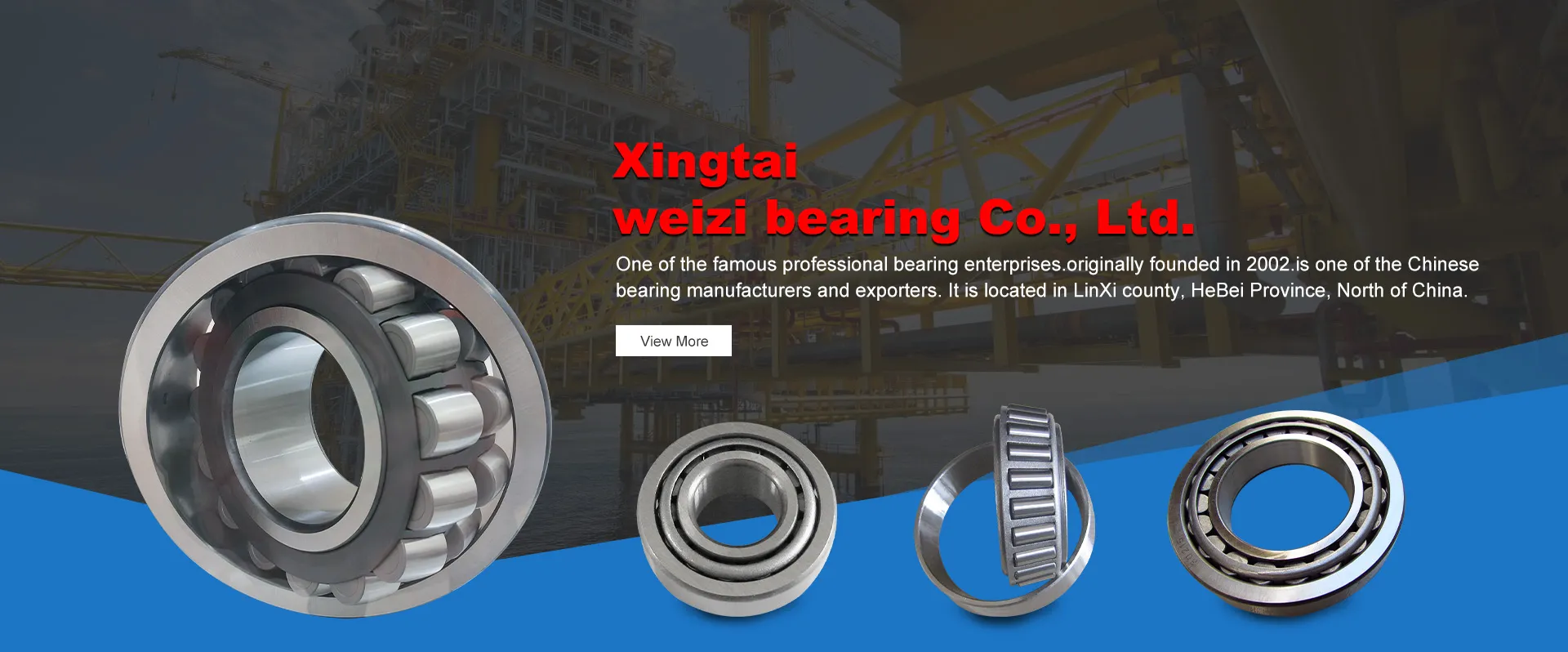
Jul . 31, 2024 20:00 Back to list
Development and Analysis of Advanced Shielded Thrust Bearings for Enhanced Performance and Durability
Shielded Thrust Bearings An Overview
In mechanical engineering, thrust bearings play a critical role in supporting axial loads and ensuring smooth operation in a variety of machinery. Among the different types of thrust bearings available, shielded thrust bearings have gained prominence due to their unique design and functional advantages. This article delves into the characteristics, advantages, applications, and maintenance considerations associated with shielded thrust bearings.
What are Shielded Thrust Bearings?
Shielded thrust bearings consist of rolling elements—such as balls or rollers—contained within two races. They feature shields on one or both sides, serving to protect the internal components from contamination and external environmental influences. The shielding minimizes the ingress of dirt, dust, and other particles that can compromise the integrity and performance of the bearing.
The design of shielded thrust bearings typically includes a pre-lubrication feature, which allows them to operate efficiently right out of the box. These bearings can come in various configurations, including single-direction thrust bearings, which support axial loads in one direction, and double-direction thrust bearings, allowing for axial loading in both directions.
Advantages of Shielded Thrust Bearings
1. Enhanced Protection The primary advantage of shielded thrust bearings is the additional protection they provide against contaminants. By preventing debris from entering, shielded designs significantly reduce the risk of premature wear, extending the service life of the bearing.
2. Reduced Maintenance The shielding reduces the frequency of lubrication and maintenance tasks. Since contaminants are barred from entering, the bearings tend to retain their lubricants longer, thereby diminishing operational downtime and maintenance costs.
shielded thrust bearing

3. Improved Performance With less contamination and wear, shielded thrust bearings can operate at a higher reliability level. They can sustain smooth and efficient performance even under high loads and speed conditions.
4. Versatility Shielded thrust bearings can be utilized in various applications across different industries. From automotive to aerospace and manufacturing, their versatility makes them suitable for use in high-performance environments where axial load management is crucial.
Applications of Shielded Thrust Bearings
Due to their robust design and protective features, shielded thrust bearings are employed in numerous applications. Some common uses include
- Transportation In vehicles, shielded thrust bearings are used in different systems such as transmissions, where they manage axial loads effectively. - Industrial Machinery Manufacturing equipment often utilizes these bearings to support rotating shafts or other components, ensuring reliability and durability in demanding operational conditions. - Aerospace In the aerospace sector, shielded thrust bearings are crucial for components that face significant forces during operation, ensuring safety and performance. - Robotics With the rise of robotic technology, shielded thrust bearings are increasingly being integrated into robotic joints and drive systems, allowing for precise movement and control.
Maintenance Considerations
While shielded thrust bearings require less maintenance compared to non-shielded variants, regular inspection is still essential. Monitoring for unusual noise, vibrations, or heat generation can help identify potential issues early on. Additionally, it is crucial to ensure that lubrication levels are adequate and maintain an appropriate environment for the bearings to operate within their specified limits.
In conclusion, shielded thrust bearings offer significant advantages in terms of protection, performance, and versatility, making them a preferred choice in various industrial applications. Their ability to mitigate contamination risks and reduce maintenance needs plays a vital role in enhancing the operational efficiency of machinery, thus making them indispensable components in modern engineering solutions. As industries continue to evolve, the role of shielded thrust bearings is likely to expand, driven by the demand for increased reliability and ease of maintenance.
Latest news
-
Grooved Ball Bearing Design and Functionality
NewsJun.04,2025
-
Concrete Mixer Bearing Load Capacity Testing
NewsJun.04,2025
-
6004 Bearing Dimensions in Robotic Joint Designs
NewsJun.04,2025
-
Advantages of Single-Row Deep Groove Ball Bearings
NewsJun.04,2025
-
Applications of Deep Groove Ball Bearings in Automotive Systems
NewsJun.04,2025
-
Innovations in Bearing Pressing Machine Design
NewsJun.04,2025
